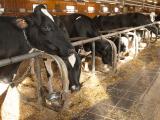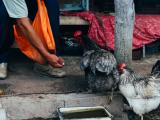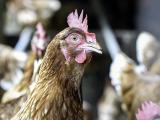Editor's Note: Shortly after publication of this article, the guidelines referred to were removed from the WHO Web site pending further peer review. A revised version was published in January 2007, with changes in the sections on considerations for launching an investigation, contact tracing, monitoring of healthcare workers, and technical references. A link to the revision appears at the end of this article.
Nov 29, 2006 (CIDRAP News) – The World Health Organization (WHO) this week released guidelines for investigating human cases of H5N1 avian influenza in an effort to shed more light on the mysterious virus and improve the chances of detecting changes that could turn it into a pandemic strain.
The 14-page document calls for a thorough probe of each case, from interviewing the patient and searching for contacts through hunting for other cases nearby and sifting data for any signs of human-to-human transmission. It calls for investigating suspected cases before laboratory test results are available.
The new guidance comes less than a month after the WHO issued a report on how much remains unknown about the H5N1 virus. Written by a group of leading flu experts, that report, issued Nov 2, said H5N1 illness is fundamentally different from ordinary flu in its severity and range of manifestations. Among other things, the panel called for research to determine why children and young adults seem especially susceptible and whether genetic factors increase the risk of infection or transmission among blood relatives.
The introduction to the new guidance says, "The document reflects and incorporates the practical field experience gained by investigators working at international, national, and sub-national levels during investigations of A(H5N1)."
The intention is that local health agencies will use the guidelines to build their own investigative plans and procedures, the WHO says.
The purposes of case investigation, according to the guidelines, include:
- Confirming the diagnosis of H5N1
- Reducing illness and death by rapidly identifying cases and starting appropriate treatment and precautions
- Reducing further spread by identifying possible sources of exposure and implementing prevention and control measures
- Determining if human-to-human transmission is becoming more efficient
- Identifying the key epidemiologic, clinical, and virologic characteristics of each case
- Ensuring timely exchange of information among clinicians, health investigators, and government officials to facilitate appropriate responses
In advice on searching for patients' contacts, the WHO says investigators should assume that patients are infectious for 1 week before onset of illness and 2 weeks afterward, even though the infectious period for the virus has not been determined. Healthy contacts should be monitored and given preventive antiviral treatment, depending on their risk of exposure, as defined in other WHO guidance.
Besides tracing contacts, investigators should search actively for other possible H5N1 cases by going from house to house and possibly conducting telephone surveys of healthcare facilities, practitioners, and labs, the WHO advises.
The agency recommends against using rapid diagnostic tests for the H5N1 virus. "The diagnostic accuracy of commercially available rapid tests is unknown, and if the test result is positive, differentiation between influenza A subtypes is not possible and confirmatory tests must be done," the document says.
In its Nov 2 report, the WHO said a rapid, reliable diagnostic test for H5N1 infection was urgently needed.
The guidance document discusses potential clues to a change in the virus's human transmissibility and what to look for in evaluating clusters of cases. It also suggests doing complementary studies, such as seroprevalence surveys of people with possible occupational risk in affected areas and case-control studies to evaluate risk factors for infection.
See also:
WHO guidelines for investigation of human cases of avian influenza A(H5N1) (January 2007 revision)
http://www.who.int/csr/resources/publications/influenza/WHO_CDS_EPR_GIP_2006_4r1.pdf
Nov 2, 2006, CIDRAP News story "WHO report calls H5N1 vaccine stockpiling premature"



















